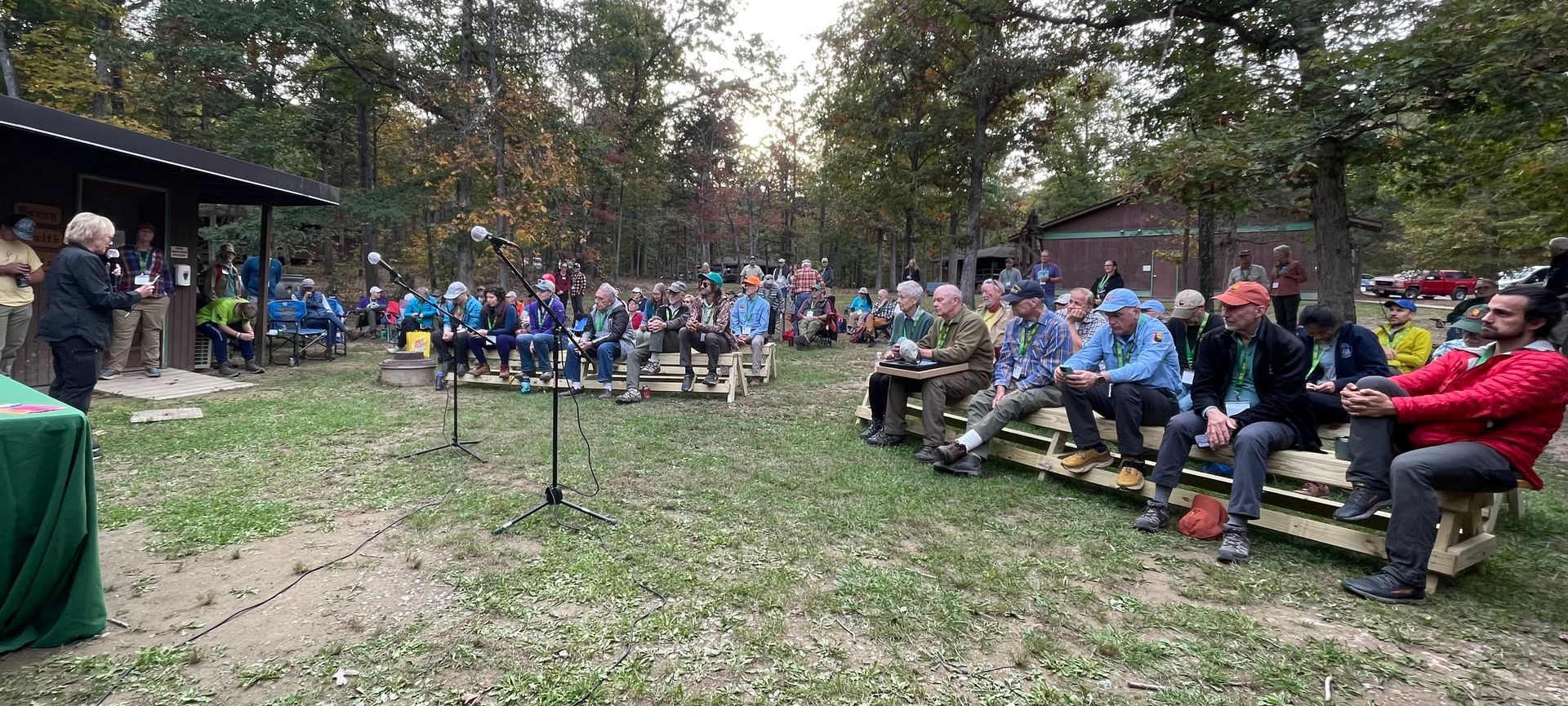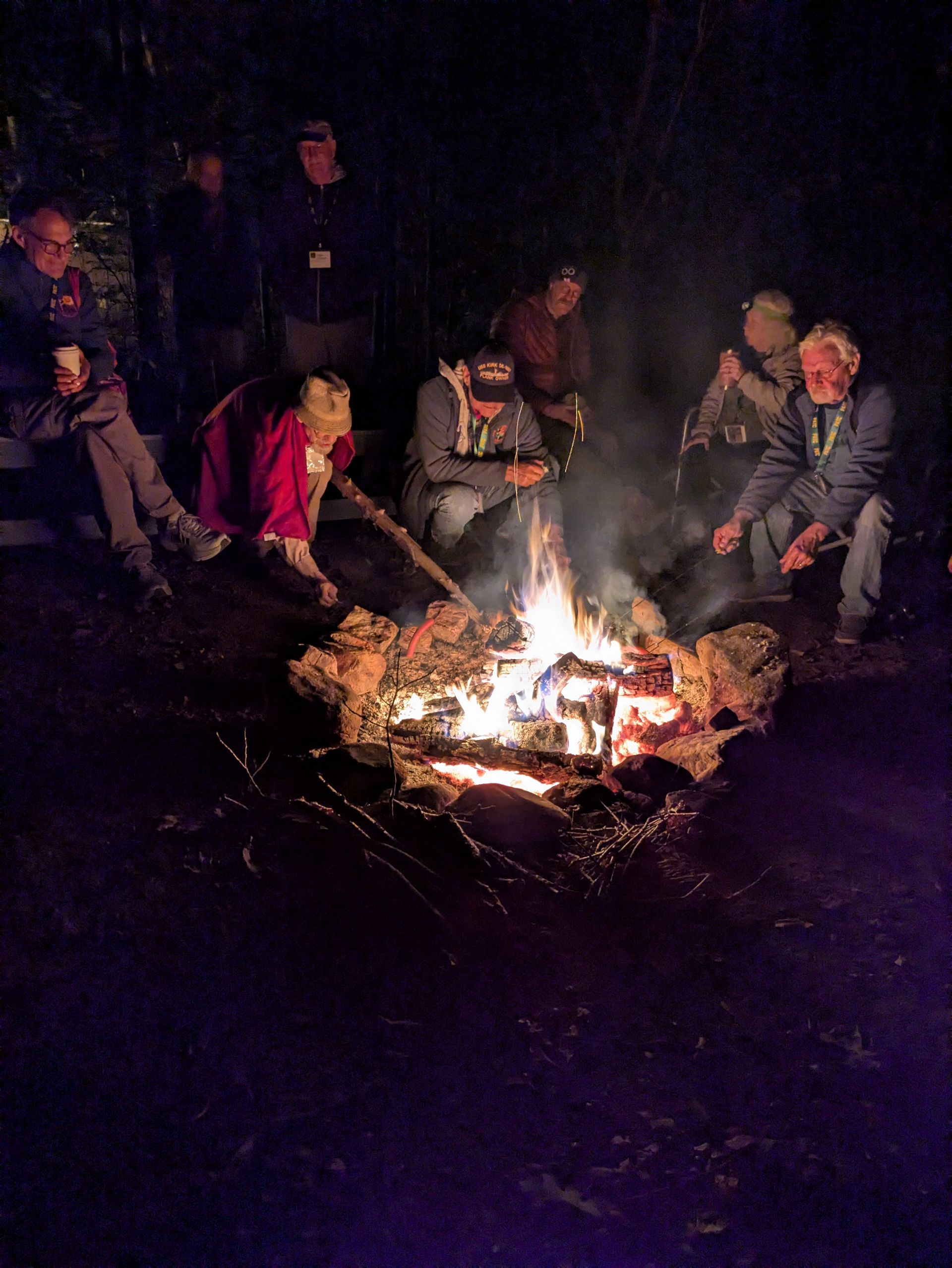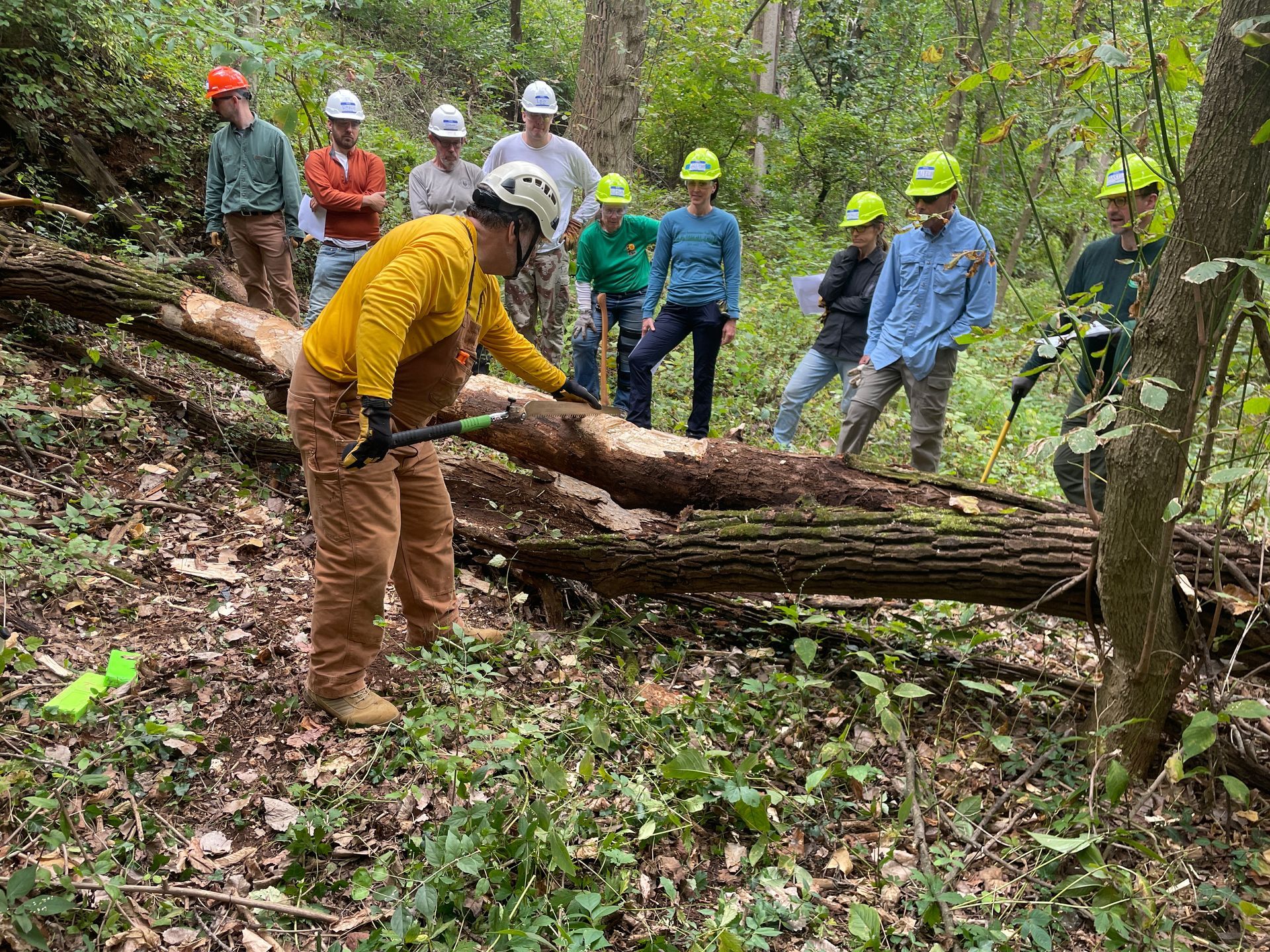In PATC’s early years, its members had many interesting experiences with the people who lived in the area that became Shenandoah National Park. The park was not completed and dedicated until 1936. Before then the land that it covered was still populated by families whose ancestors had settled there several generations ago in the late 1700s. Like everywhere, there was a wide variety in the residents’ personalities, attitudes, economic status, education and outlook on life. The creation of the park would forever change the life they knew on the Blue Ridge.
Cabin Construction Begins
In 1932 the construction of Range View Cabin had begun. Every weekend a group of club members went to the site to work. Leaders in this endeavor were Frank Schairer, Myron Avery, Al Jackman and Otis Gates, the last in charge of cabin and shelter construction and maintenance. Building a cabin was difficult enough, what with bringing in the materials by car and then on foot, as well as the labor of construction.
There was one additional difficulty. Many of the local people were opposed to the cabin being built. The coming of city people was an intrusion that would interfere with the lives of the residents. Opposition was more than simply a wariness of newcomers. The local farming, hunting, fishing, whiskey-making economy would be interrupted by the outsiders. When the cabin was completed, the presence of city hikers on weekends would pose problems.
The residents made their displeasure known. Club members were told to leave; they were cursed and hooted at. Materials and tools left on site were stolen during the week, and some destruction took place.
Law Turns Blind Eye
Otis Gates wrote to Sheriff Keyser of Rappahannock County and Sheriff Lucas of Page County several times, but nothing was done. After all, the Trail club members did not live, own property, pay taxes or vote in either county, while the vandals were residents or children of residents and therefore constituents of one or other of the sheriffs. When election time came, votes mattered, and complaints by nonvoters were ignored.
In spite of Gates’ letters about a gang of juveniles led by an adult named Jerry Sowers, coming and cursing, using insulting language and even throwing rocks at the workers, local law enforcement officers ignored them.
Some of the PATC leaders knew two brothers from farther south, near Skyland, Charlie and Perry Sisk. Perry Sisk was a good carpenter and a fair stonemason, while Charlie Sisk was skilled at stone work. Both were willing, dependable workers - if hired on their own terms - and would give good value for their pay. It was common knowledge that Charlie Sisk had once killed a man, one with whom he had had a number of disagreements, in a dispute that took place when both were drunk. At the trial the jury did not accept Sisk’s plea of self-defense, and he had to serve a term of one year.
The club already had reached an agreement with Sisk for some work at Range View, and its leaders had such faith in his work skills and honesty that they waited for him to finish serving his sentence.
When freed, Sisk came to work at Range View to do the stone work. He put up with the meanness of the gang of young hoodlums for a couple of days, then grew tired of being harassed. According to the story, recited over and over through the years, on his third day on the job, Sisk was again greeted by hoots and jeers, curses and insults, and a rock or two came close to him. Sisk and his helper put their tools down, opened up the burlap sack they had brought with them and took out two shotguns. They loaded the weapons and laid them down within easy reach. Silence fell quickly on the group of youngsters; rocks in hand were dropped. The group drifted away and never returned.
Though Skyland was 30 miles from the vicinity of Elk Wallow Gap and Hogback Mountain, Charlie Sisk’s reputation as a "bad man" was known, and he was feared. Work on the cabin went forward without interruption, and weekend workers were no longer bothered.
Local Business
Sisk’s fee was $400, which was considered cheap even in those times. The club thought it had gotten a real bargain, and Sisk bragged that he had made $400 "pure profit." Some considered him a not very sophisticated accountant, but $400 was a very large sum in the spare mountain economy.
All concerned seemed to be happy, but perhaps the local citizens were not. In the advent of the AT, some residents had to move their stills and change their hunting territory and perhaps not let their stock graze as freely as before.
The citizens had failed to keep the city hikers out. Perhaps they were happy when Charlie Sisk went back south upon completion of his work. One rumor had it that they feared he would set up a still nearby and cut in on their liquor business. With his mason’s skills, Sisk had enough going for him that he didn’t need to cut into local still business. It was said that he made corn liquor for himself, friends and family, but was not a real moonshiner. He had had enough of prison life and didn’t want to worry about revenue agents. But Sisk was not a man to cross in any way.
The Brother’s Contribution
Charlie Sisk’s brother Perry used his skills with saw, hammer, nails and lumber many times for the club. According to Grant Conway, who wrote much about the early history of PATC when he was a member in the 1940s, ‘50s and ‘60s, Perry Sisk had fathered 25 children, all by the same wife! This would make Sisk and his wife a truly remarkable couple.
With a family of that size, he needed to work at something, because even in a self-sufficient society such as the mountain people had, some cash was needed. Both Perry and Charlie Sisk were skilled, honest, dependable workmen and never had trouble finding employment when they sought it. As they were always amiable with PATC members, they were a great deal of help to the club during its formative years.
PATC had a lot of contact with the mountaineers of the SNP in its early years. There were problems with the residents at times, and situations arose in which the mountaineers definitely were hostile. But Frank Schairer, Charlie Williams, Joe Winn, Al Jackman and others had good relations with them.
Cultures Crossing
When the locals saw that the hikers from the city were tolerant, friendly, honest, helpful at times, respectful of local customs most of the time and also offered employment now and then, relations between the two groups improved as time went by.
When Skyline Drive was built, the lives of these people were disrupted forever, and the Trail club members lost contact with them as they were forced to move out. Frank Schairer and several others would take or mail clothing and food to the mountaineers in their new homes at Christmas time for a year or two, but life moved on for all, and that practice was discontinued.
These years were a colorful and interesting period in the club’s history. It was good that, in most cases, relations between the club and the mountain residents ended on good terms. When club project directors and former residents met again, as they occasionally did in Sperryville or on the streets of Luray, it was like a reunion of old friends. In a way, contacts with these people helped make PATC what it is today. Though the march of progress into the wilderness areas was inevitable, a meaner, more self-centered group of outdoor enthusiasts would have had a more difficult time and left ill-feeling behind that would have tainted PATC’s reputation. But instead, PATC gained stature as word spread about how it dealt with other people.










